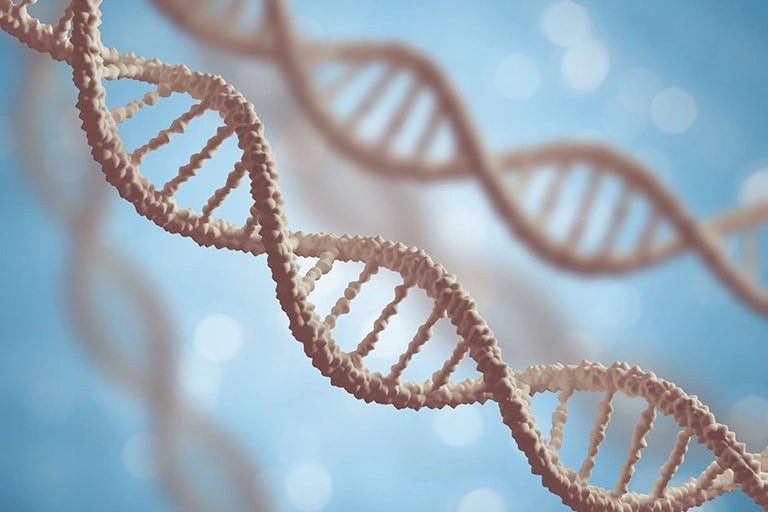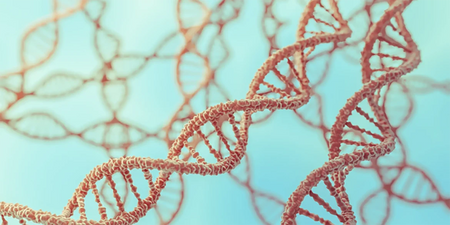Nucleotides: Experience
The most important facts at a glance
Definition and structure of nucleotides
Find out how the basic building blocks of DNA and RNA are structured and what functions the individual components have.
Learn moreExperience with nucleotides in research
Find out how nucleotide research has led to significant advances in molecular biology and genetics.
Learn moreApplications of nucleotides in medicine
In medicine, nucleotides are used in various areas, including diagnostics, therapy and vaccine development. Read here how exactly they are used.
Learn moreNucleotides are one of the most important molecules in all living organisms. They are crucial for the transmission of genetic information and are fundamental to the structure of DNA and RNA. Nucleotides consist of a sugar, a phosphate group and a nitrogen base. There are four different nucleotides: adenine, cytosine, guanine and thymine (in DNA) and uracil (in RNA). Research into nucleotides and their function has led to significant advances in biology. In this article, we will take a closer look at the experiences of scientists and researchers with nucleotides and discuss the implications of their discoveries.
Definition and structure of nucleotides
Nucleotides are the building blocks of nucleic acids, which include DNA and RNA. They play a crucial role in the storage and transmission of genetic information. A nucleotide consists of three main components: a phosphate group, a sugar (either deoxyribose in DNA or ribose in RNA) and a base. There are a total of four different bases that occur in nucleotides: Adenine (A), Thymine (T) (only in DNA and Uracil in RNA), Cytosine (C) and Guanine (G). The structure of this nutrient can therefore vary depending on which base it contains. The function of the different components of a nucleotide is closely linked. The phosphate group connects the nucleotides to form a nucleotide chain and thus forms the backbone of nucleic acids. The base in turn is responsible for the genetic information. By twisting two nucleic acid chains together, the structure of DNA is formed: a double helix. The base pairings ensure the stability of the double helix structure, as adenine is always paired with thymine or uracil and cytosine is always paired with guanine. This specific structure enables DNA to store and pass on information by replicating it and preserving the genetic information in the daughter cells.

Products containing nucleotides
Experience with nucleotides in research
Research into nucleotides can be traced back to the 19th century, when scientists began to study the structure and function of DNA and RNA. These early studies laid the foundation for later discoveries and advances in the field of nucleotides. One of the most important discoveries was the identification of the four different bases that make up DNA and RNA: Adenine, Thymine, Guanine and Cytosine. This discovery enabled researchers to decode the genetic information in DNA and develop the concept of DNA replication.
This in turn led to the ability to investigate the functions of nucleotides. In the last few decades in particular, significant research projects and experiments have been carried out to further deepen our understanding of nucleotides.
One of these projects, for example, was the decoding of the human genome, in which complete DNA sequencing was achieved. This project enabled scientists to obtain important information about the genetic composition of an organism or a specific gene, to gain far-reaching insights into the variations in the nucleotide sequences and to investigate their link to genetic diseases. The nucleotides are added to the growing DNA strand one by one, revealing the sequence of the individual bases. This enabled the researchers to analyze and understand the genetic material in detail.
In addition to DNA sequencing, nucleotides are also used in genetic engineering. Here, specific nucleotides are introduced into an organism in order to change its genetic make-up. This can help to investigate different aspects of the organism or potentially create new characteristics. For example, nucleotides can be used to switch off or amplify genes.
Ultimately, nucleotides help in the research and development of drugs. Many drugs, especially those based on genes or proteins, rely on nucleotides as active ingredients. These drugs can work in different ways, for example by altering genetic expression or targeting specific receptors. In addition, studying the nucleotide sequence allows researchers to identify genetic mutations associated with specific diseases. This helps them to develop new drugs that target these mutations and can potentially treat the disease.
Overall, experience with nucleotides in research has led to significant advances in molecular biology and genetics. Without this research, we would not know today how important nucleotides are for our health.
More matching blog articles on the topic of nucleotides
Applications of nucleotides in medicine
In medicine, nucleotides are used in various areas, including diagnostics, therapy and vaccine development. One example of the use of nucleotides in diagnostics is the polymerase chain reaction (PCR), which is used to amplify nucleic acid sequences. PCR is an important part of the diagnosis of infectious diseases such as COVID-19 and enables pathogens to be identified quickly and accurately.
Another example of the use of nucleotides in medicine is the treatment of genetic diseases such as spinal muscular atrophy (SMA). Here, a nucleotide sequence is introduced into the cells in order to stimulate the production of the missing protein and thus alleviate the symptoms of the disease.
Another example of the use of nucleotides in therapy is genetic engineering. RNA interference (RNAi) uses nucleotides for the targeted inhibition of gene expression. By adding specific RNA molecules that are complementary to the genes to be inhibited, these can be selectively blocked. This enables the treatment of genetic diseases at the molecular level.
Nucleotides are also used in the development of vaccines, such as the mRNA vaccine against COVID-19. Here, a nucleotide sequence in the form of mRNA is introduced into the cells to trigger the production of a viral protein. The body recognizes the protein as foreign and forms an immune response that protects against a subsequent infection.
Nucleotides are also used as medicines in medicine. One example of this is antiviral drugs such as nucleoside analogs, which are used in the treatment of HIV and hepatitis. These drugs work by interfering with the viral DNA or RNA replication process and thus inhibiting the replication of the virus.
Finally, nucleotides can also help in the treatment of heart disease. Adenosine phosphate receptor agonists such as adenosine improve blood flow to the heart muscle and can be used in the acute treatment of angina pectoris.
Overall, nucleotides are an important component of modern medicine and enable a wide range of diagnostic and therapeutic applications. Research in this field will continue to contribute to the development of new and innovative approaches to the treatment of diseases in the future.
Our conclusion
Nucleotides are the building blocks of life, consisting of a phosphate group, a sugar and a base. They are the building blocks of the nucleic acids DNA and RNA. Researchers have already had positive experiences with nucleotides. Nucleotides are also used in medicine, for example in the diagnosis of genetic diseases or in the development of RNA-based therapies and vaccinations. Due to their diverse functions and structures, nucleotides are essential for our health.






